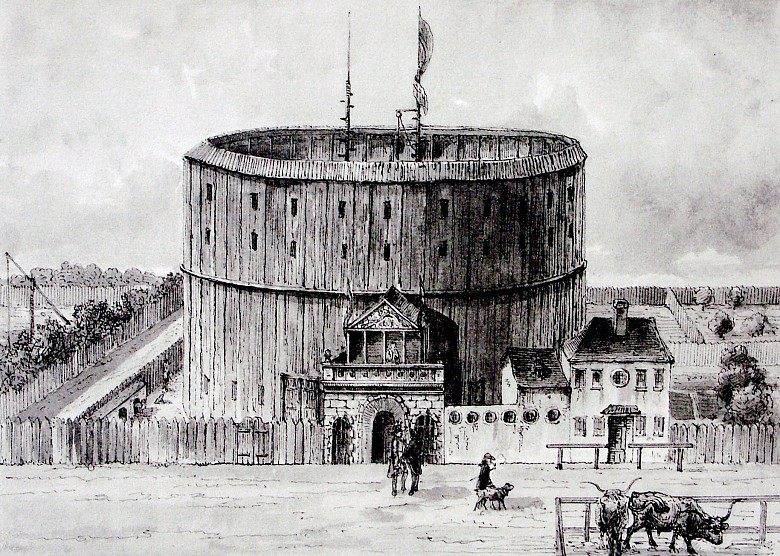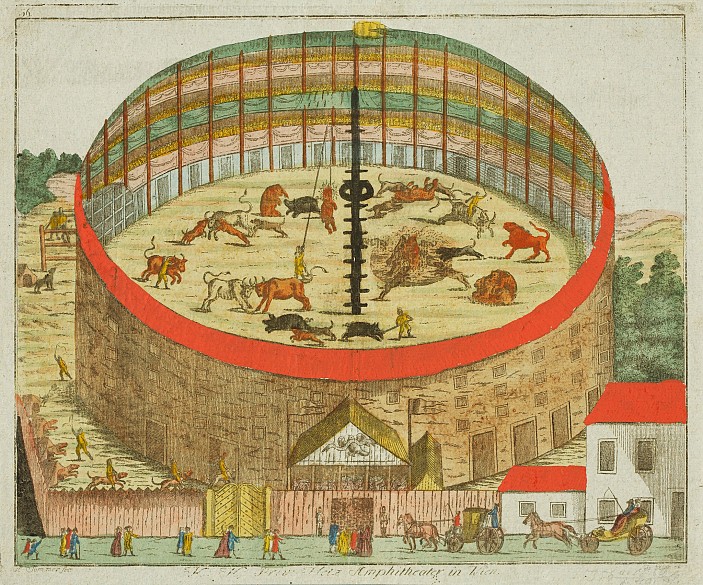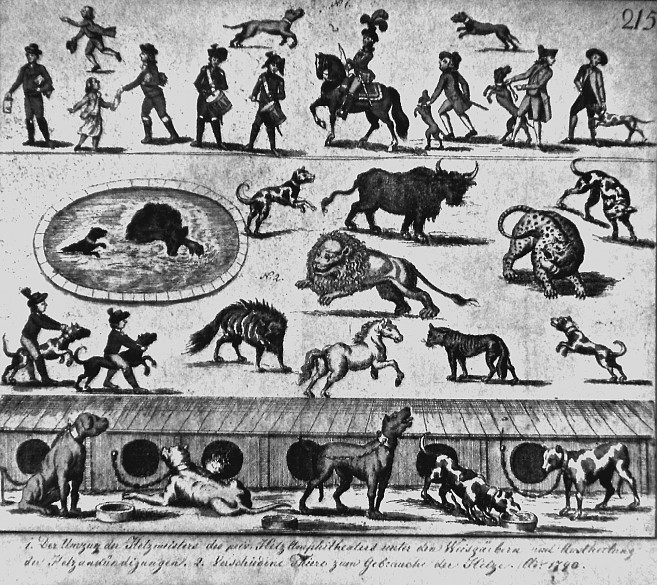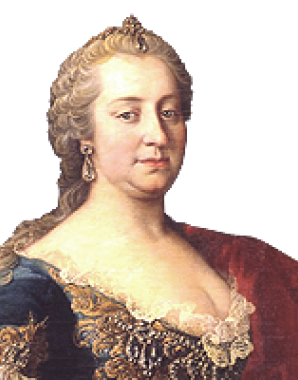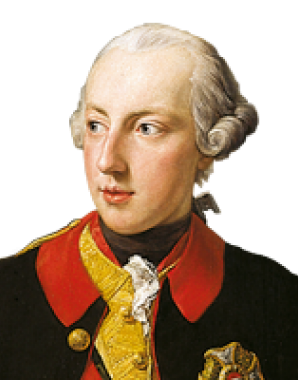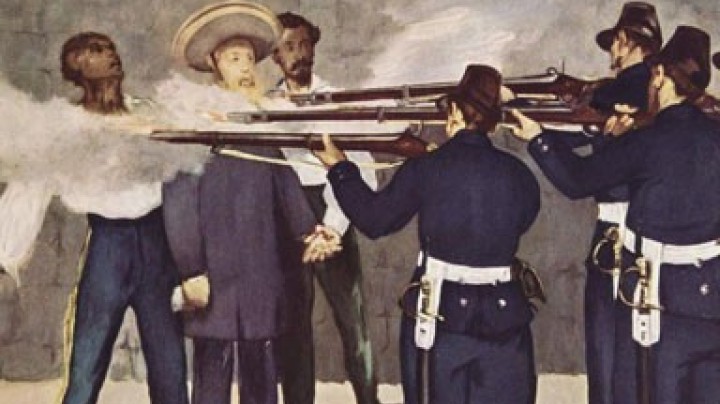The bears are out! Bloodthirsty pleasures at the Hetz amphitheatre
The Habsburgs cherished a passion for hunting, bagging huge quantities of game each year and even wiping some kinds out completely in certain areas. The common people had their own equally bloody amusements in the Hetztheater in the suburbs.
A description of the Hetzamphitheater in a letter dated 11 March 1776Let me describe it in a little more detail, for from this you will be able to draw conclusions about the taste of a part of the populace. The amphitheatre is built of wood and has three storeys. In the middle is a covered water pit or basin. Beside this is a tall tree which … the attendants can climb to save themselves in an emergency. … All around there are twenty-one trap-doors, and three large main gates; from the former emerge the animals, and from the latter the oxen and the dogs. One mounts via very narrow steps, takes a box or sits in the round, where one thinks to have the best view of the contest. On the second floor sits a troop of soldiers, all dressed in red coats, who are obliged to entertain the spectators with wretched music (called ‘Turkish’) until the spectacle starts. … I was all eyes to see the first beast spoiling for a fight – and what was it? A scrawny, emaciated Hungarian ox. … The dogs tore at the ox’s ears pitifully, the poor beast roared in pain almost a quarter of an hour, until at last the attendants looped a rope around his horns, released him and led him back. After that a dancing bear appeared …. Throughout spectacle I noted various expressions and grimaces on peoples’ faces. … Even the gentler sex watched in greedy anticipation for the poor animals to be torn to pieces. … So, now you have a good idea of the whole thing here …
Pleasure was not the exclusive preserve of high-ranking lords and ladies; theatre and dancing were popular with all levels of society and were enjoyed in the suburban theatres, at marionette and puppet shows, at farces and burlesques and in the dance halls of the taverns.
One bloodthirsty but extremely popular attraction was the Hetzamphitheater in Vienna: a three-storeyed wooden structure with masonry cages in the Unter den Weissgerbern suburb (today in Vienna’s third municipal district) which could hold up to 3,000 spectators. Here animal-baiting spectacles were staged: hounds were set upon bears, wolves, wild boars and even lions and leopards.
Animals which are kept permanently: A lion. Two tigers. Ten bears. Six wolves. Four wild boars. Two Hungarian bulls. Two Swiss bulls. Two stags. A number of foxes, badgers and lynx. Seventy-three hounds. In addition to the animals listed, at each spectacle two fresh wild Hungarian oxen selected from the city’s butchers are baited.
The performances took place in the afternoon on Sundays and public holidays from March to November, but only in fine weather, as the amphitheatre was not roofed over. The performances were advertised in the city and the suburbs on flyers known as Hetzzettel and were highly popular with all classes of society. The mood of the spectators was whipped up by an orchestra playing exotic-sounding ‘Turkish’ music.
The Hetztheater made large profits and for that reason it was acquired and leased out by the state, against all reservations and notwithstanding the policy of striving to raise popular taste. From then on the receipts flowed into the Cassa Pauperum or poor-relief fund. This form of entertainment was roundly criticized by intellectuals who were influenced by Enlightenment ideals. In 1796 the Hetztheater burned down and was not rebuilt.
